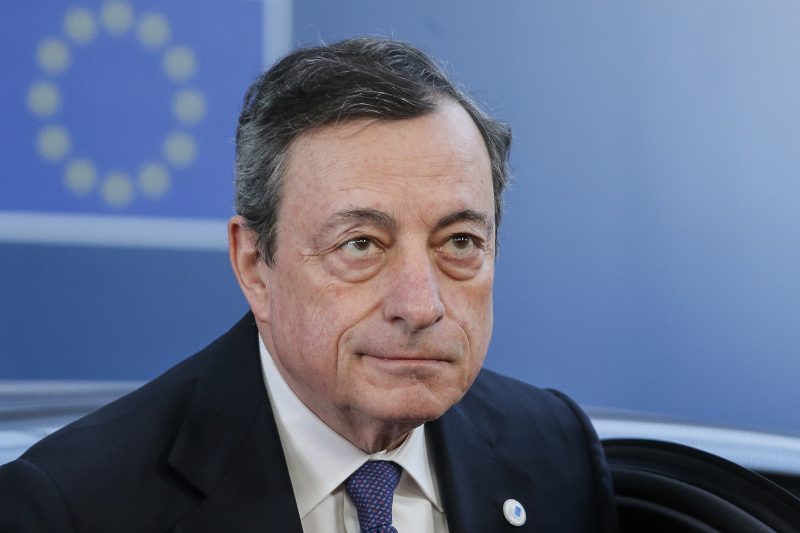How the 20-year-old ECB has learnt to flex its muscles
ECB President Mario Draghi, who must hand over to a successor by October, says interest rates will remain at historic lows “at least through the end of 2019” (JULIEN WARNAND)
Frankfurt am Main (AFP) – The European Central Bank is the youngest by far among the world’s major monetary authorities and the only one steering policy for a group of independent countries.
In its 20-year-lifespan, the ECB has already tested the limits of its independence from politics, building up its armoury of tools to intervene in markets and stick to its “price stability” target through juddering eurozone crises.
– Setting interest rates –
ECB policymakers in Frankfurt restricted themselves for more than a decade, after its 1999 birth, to managing the economy by adjusting interest rates.
It sets the price of credit for banks, who in turn pass the changes on to depositors and borrowers in the “real” economy of firms and households — just like the national institutions that preceded it.
In times of strong growth, rates are raised to keep a check on inflation, while slower expansion is met with lower borrowing costs to boost investment and consumer spending, buttressing the economy and avoiding the risk of deflation.
Since 2013, president Mario Draghi has used communication about the future path of rates to guide markets, currently promising interest at historic lows “at least through the end of 2019”.
– Buying up debt –
The one-two punch of the 2008 financial crisis and the ensuing sovereign debt crisis — which almost brought down the eurozone — highlighted the limits of relying on interest rates alone.
In 2009, the ECB lowered borrowing costs sharply but the move failed to calm markets.
That prompted the central bank to buy up 210 billion euros ($234 billion) of government debt from struggling states, especially Greece, Italy, Portugal and Spain, under a support scheme known as “SMP” that ran from 2010 to 2012.
But as weak growth and anaemic inflation persisted in the eurozone, the ECB three years later launched purchases on a new scale with its “quantitative easing” (QE) programme.
Between March 2015 and December 2018, policymakers bought up 2.6 trillion euros of government and corporate debt, for much of that time at a pace of tens of billions per month.
The aim: to flush newly-created money through the financial system and into the real economy to stimulate growth.
Even after the end of net new purchases, the ECB plans to keep reinvesting its gigantic stock of bonds “for an extended period of time past” any future rate hike.
– Cheap loans to banks –
Alongside QE, the central bank offered banks the chance to borrow massive amounts at extremely favourable interest rates in schemes known as TLTRO I and II between 2014 and 2016.
The measure was another attempt to encourage lending to the sluggish real economy.
Banks, especially the more fragile members of the sector in Italy, leapt at the chance for low cost liquidity in the second tranche.
In March this year, ECB president Mario Draghi said the bank would offer a third series of cheap two-year loans between September 2019 and March 2021.
– What next? –
With an eye on the October deadline for handing over the reins to a successor, Draghi has reiterated in recent months that the ECB now has a well-stocked “toolbox” and would not shrink from unpacking it if necessary.
The most controversial and fearsome but as-yet untested implement in its arsenal is a scheme known as Outright Monetary Transactions (OMT).
It would allow the central bank to buy government debt from struggling countries — if their governments first agree to economic reforms.
Announced in September 2012 as a potentially “unlimited” intervention, the mere idea of the programme was enough to calm troubled sovereign debt markets at the time.
Eurozone watchers are once again eyeing the OMT as an option if doubts resurface over Italy’s vast public debt pile — a potential time bomb threatening the stability of the eurozone.
Other observers suggest the central bank could buy stocks as well as bonds or “tier” its negative rates to spare banks some of their harmful effects, as practised by its Swedish and Swiss counterparts.
Disclaimer: Validity of the above story is for 7 Days from original date of publishing. Source: AFP.


